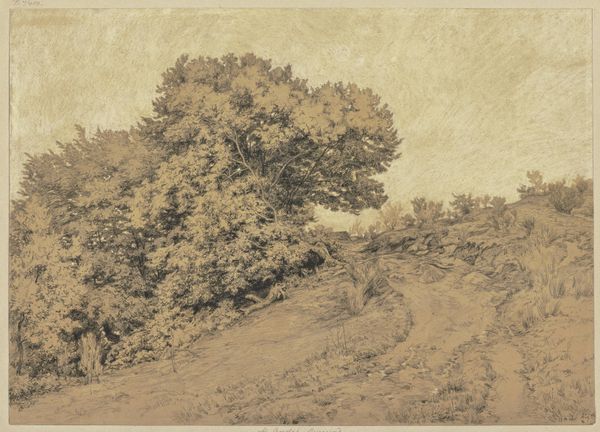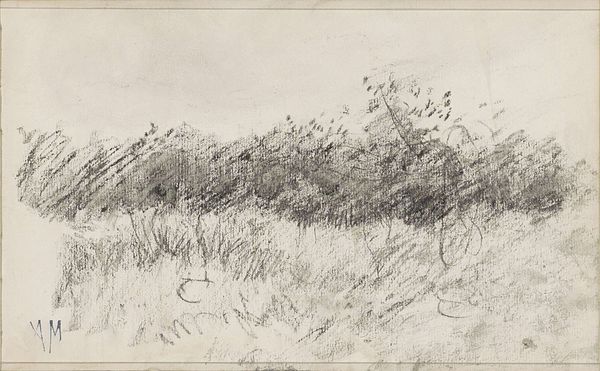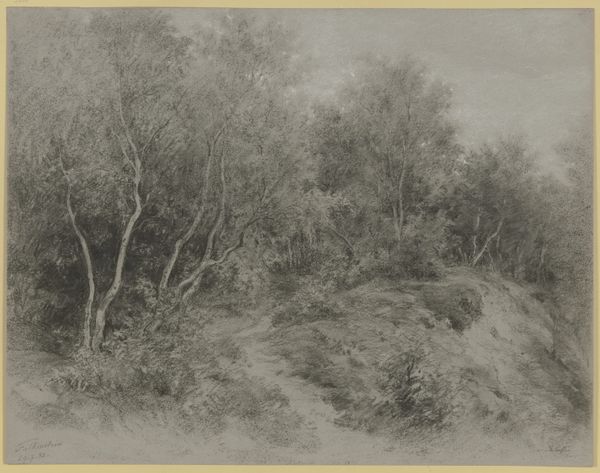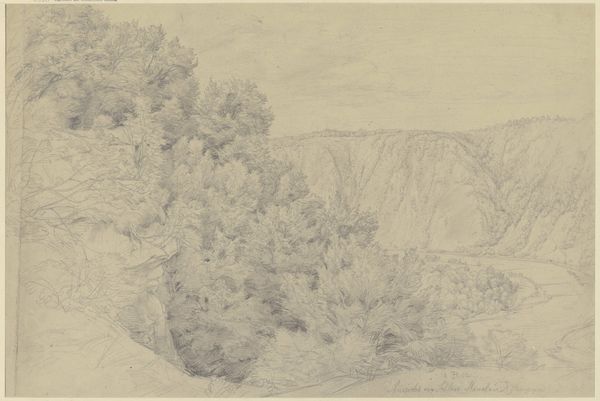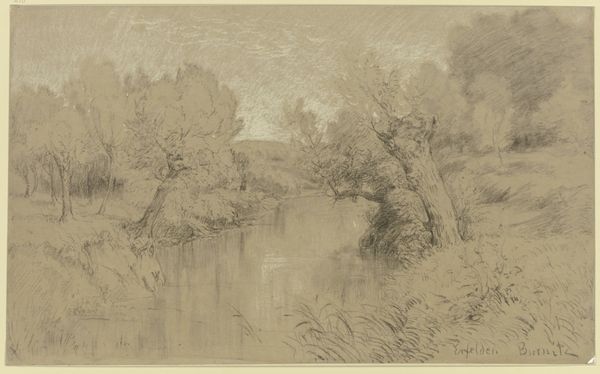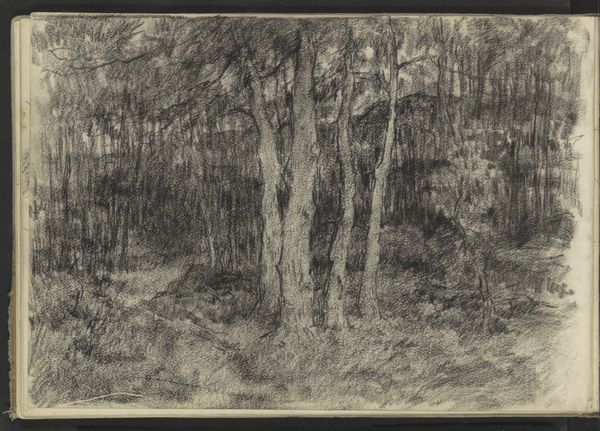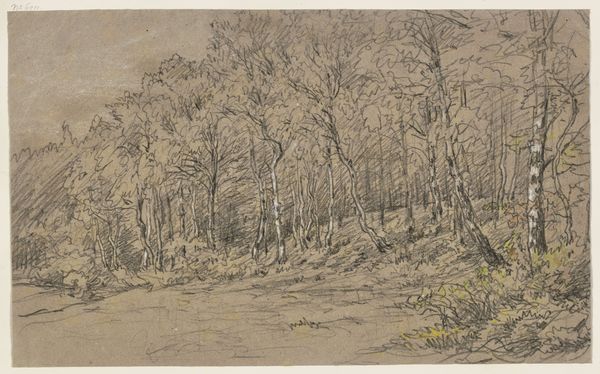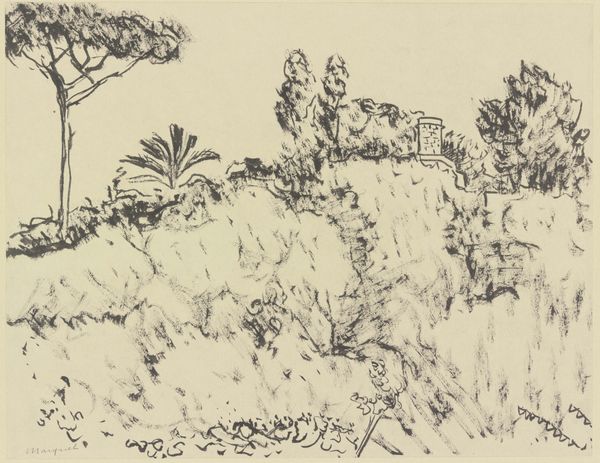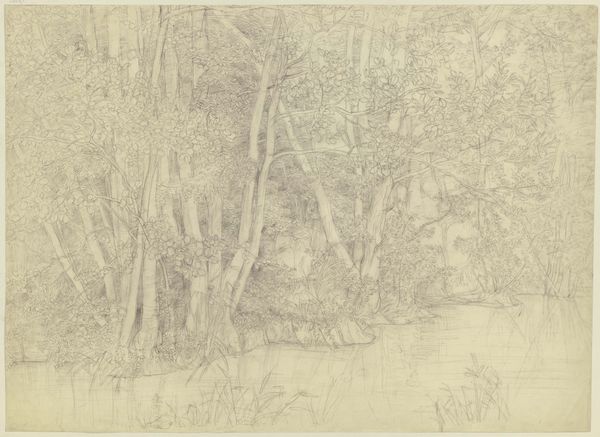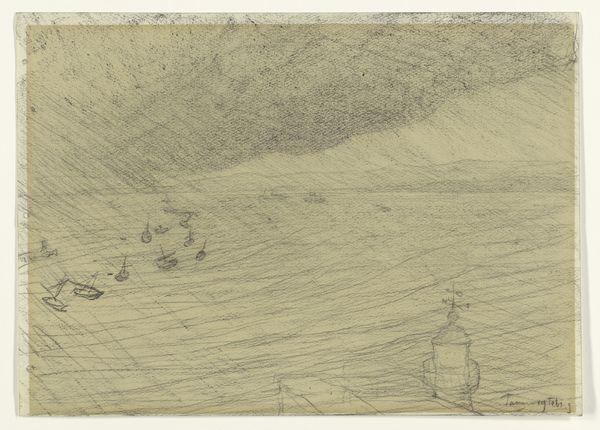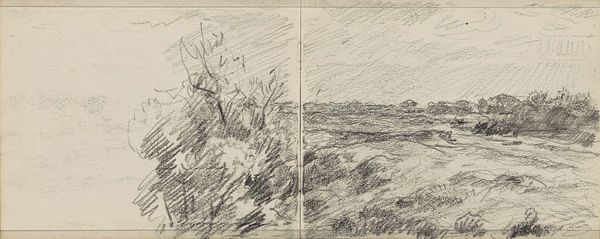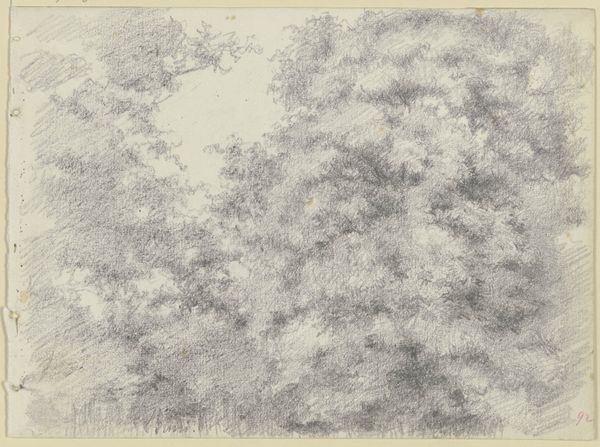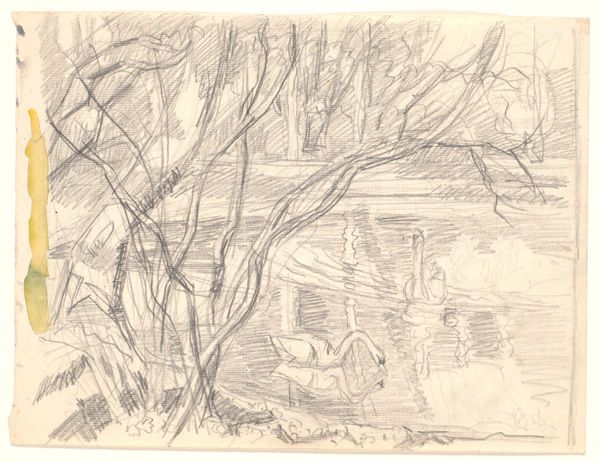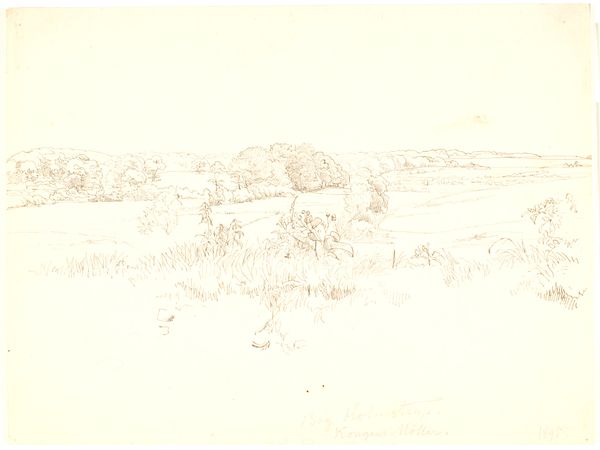
drawing, plein-air, paper, pencil, chalk, pastel
#
drawing
#
ink painting
#
impressionism
#
plein-air
#
landscape
#
etching
#
paper
#
pencil drawing
#
pencil
#
chalk
#
pastel
#
watercolor
Copyright: Public Domain
Curator: Welcome. We’re standing before "Cornfield at the forest," a drawing by Karl Peter Burnitz. Editor: It's a delicate, almost monochromatic landscape. There’s a subtle luminosity. My first thought is it has a melancholic atmosphere. Curator: Burnitz uses a combination of chalk, pastel and pencil on paper. Notice the layering, especially how he articulates depth with light and shadow. The texture invites a sense of quiet contemplation, don't you think? Editor: Definitely. This depiction resonates with broader narratives of land use and ownership during the 19th century. Consider the shift from communal lands to privatized property; Burnitz seems to capture this changing relationship with the environment and maybe reflects early environmental anxieties. The pastoral scenes often romanticize nature but it tends to erase the realities of labor and exploitation tied to it. Curator: Interesting. I’m focused on the technique, on the pure representation itself. See how the impressionistic touches, specifically the soft strokes to show how light hits the foliage—the way he captures movement. The eye is naturally drawn from the field upwards, into the denser tree line. The perspective leads your gaze across a subtly constructed visual journey. Editor: I can’t help but wonder who toiled in this field. This rendering of an idealized rural scene likely ignores or overshadows the lives of those working it. Who actually benefits from these seemingly pristine views of nature? There’s a history here—invisible labor embedded in the beauty. Curator: I understand, but there’s also beauty in form. Notice the rhythmic play of light in the corn stalks; how Burnitz utilizes negative space to accentuate shape and mass. Stripped of context, it's the successful rendering of depth on a flat plane that stands out for me. Editor: Well, that play of light, as you mentioned, also throws certain aspects into shadow—obscuring other elements of that social history. To truly see the beauty we have to address this too, recognize it is not innocent, or removed from these systems of power and privilege. Curator: Indeed. A dichotomy there—a powerful work. Editor: Ultimately a piece to reflect upon. Thank you for joining me.
Comments
No comments
Be the first to comment and join the conversation on the ultimate creative platform.
